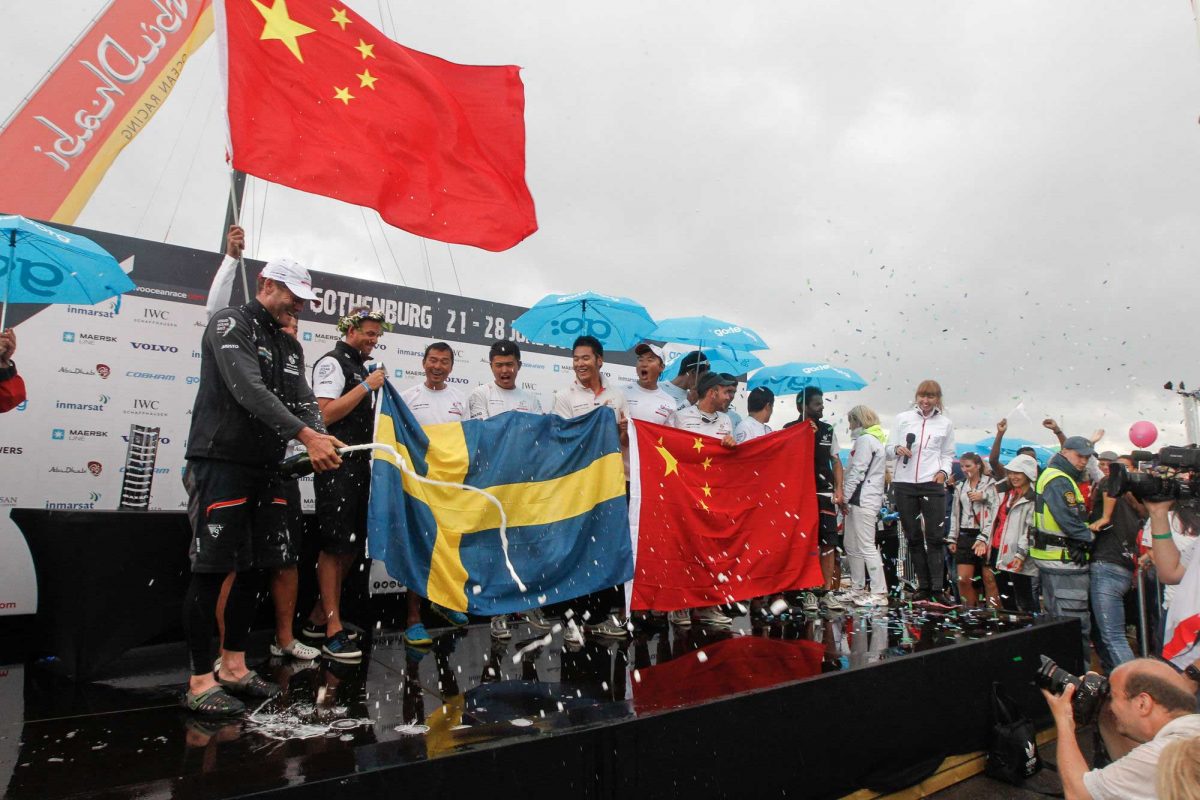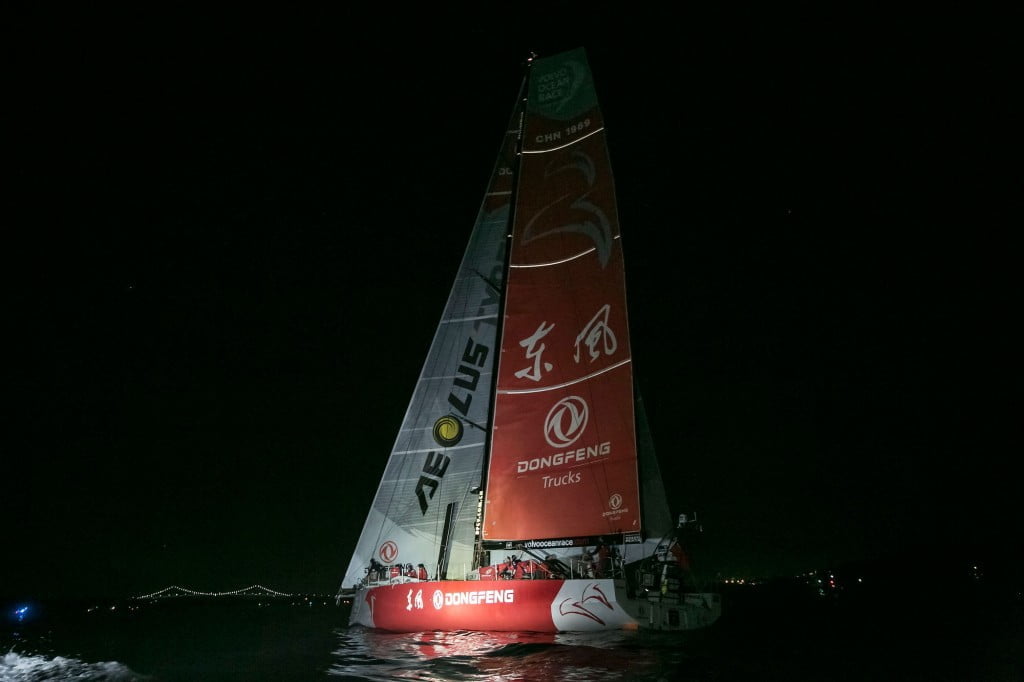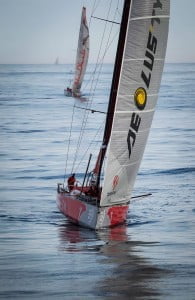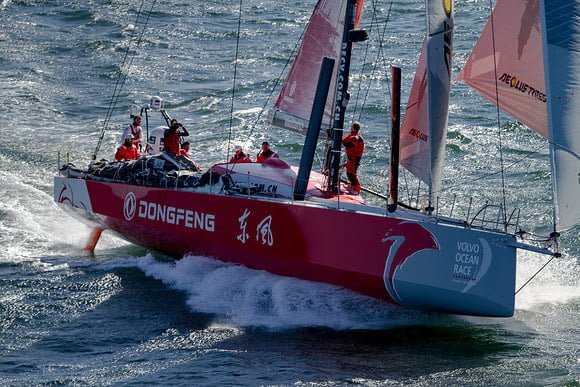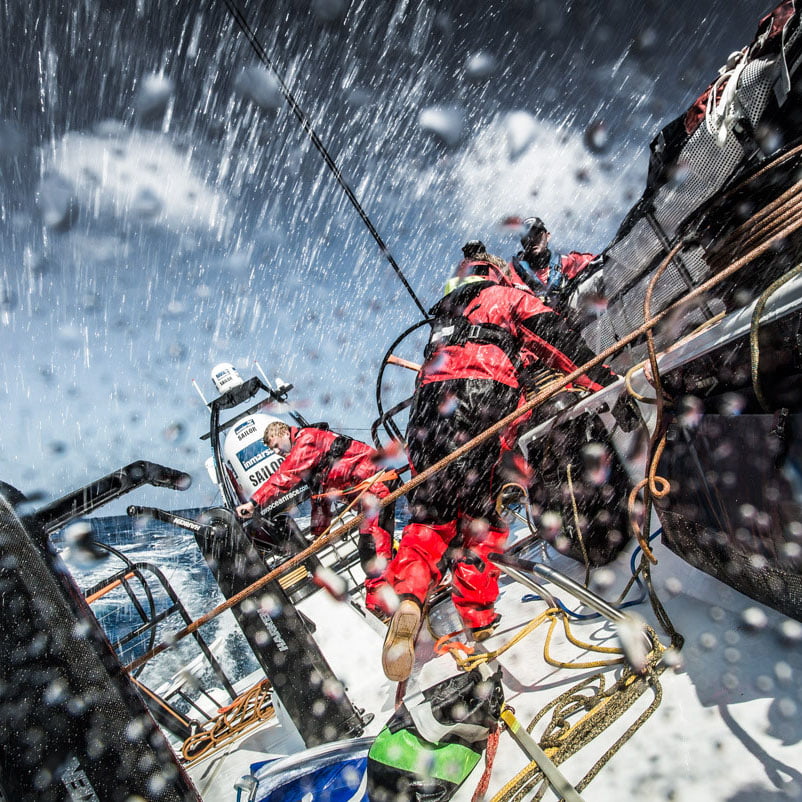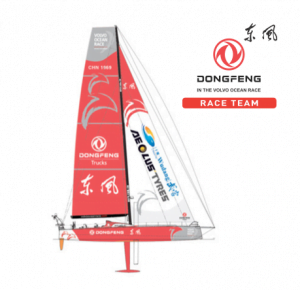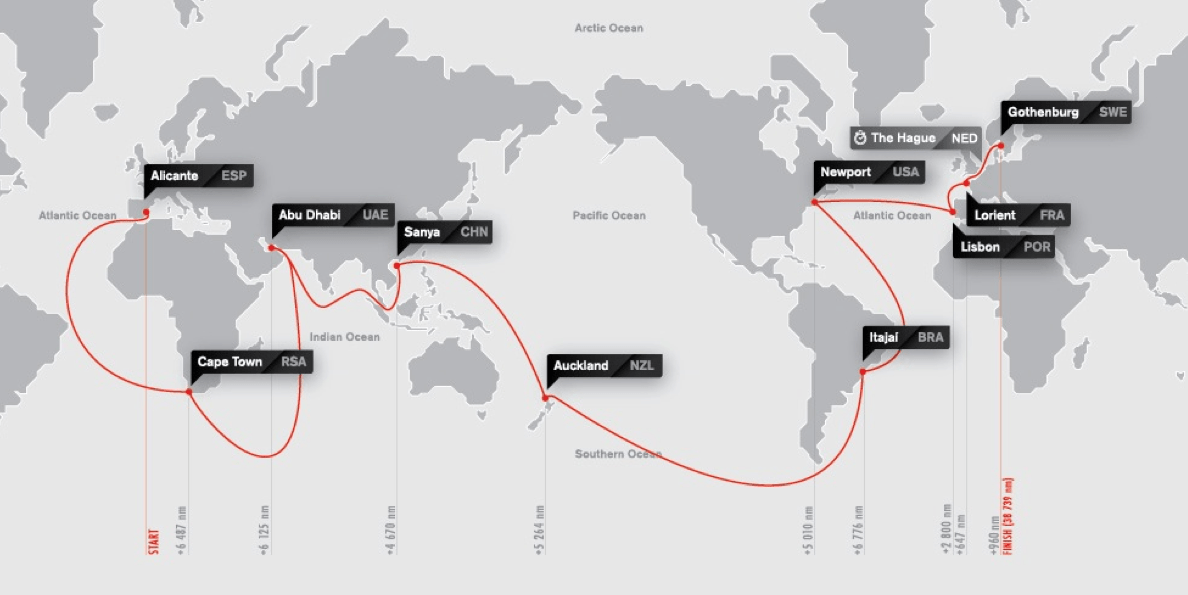For China, the Volvo Ocean Race, and all those who thought we couldn’t do it. Dongfeng Race Team secured a place on the podium of the Volvo Ocean Race 2014-15 at their first attempt today in Gothenburg, Sweden – an incredible achievement for Charles Caudrelier and his Chinese backed team.
However this podium finish reaches further than just the realms of the team. It touches the Chinese sponsors Dongfeng Trucks, Aeolus Tyres and the city of Shiyan, who took the risk of financially backing the campaign, for whom sponsorship and sailing were completely new just last year. It is a huge reward for the professional sailors and shore team who embraced the project knowing that it was not labelled a ‘winning’ campaign. And finally, it touches the journalists, family, friends, fans and everyone else who believed in us and supported us on our journey.
Winning comes in many forms, we didn’t take the trophy home but does that mean we didn’t win? Maybe we didn’t win the Volvo Ocean Race but we won our own challenge.
It’s true that this 12th edition of the Volvo Ocean Race has been epic and unbelievably, after 11 countries, over 41,000 nautical miles, two leg wins, five podium results out of nine, one broken mast and it it all came down to the last few miles. Dongfeng Race Team finished leg 9 in fourth place behind Team Alvimedica, Team Brunel and MAPFRE. The Spanish frustratingly managed to slip in front of Dongfeng a few hundred metres from the line after being covered all the way from The Hague by the Caudrelier-Bidegorry duo. But it was enough for Dongfeng to secure the overall podium place they deserved – Mapfre had to beat Dongfeng by two places to overtake them in the overall standings.
 So whilst there was some disappointment on their faces from missing a leg 9 podium after putting so much energy in to these past few days, the overall third place is a great victory for a team for whom a podium finish in Gothenburg was just a distant dream.
So whilst there was some disappointment on their faces from missing a leg 9 podium after putting so much energy in to these past few days, the overall third place is a great victory for a team for whom a podium finish in Gothenburg was just a distant dream.
“I want to thank Dongfeng and Bruno for giving me this opportunity. A year ago I never would have believed this possible. I have lived the most incredible human story with this team and I am so proud of the progress of the Chinese sailors. Turning Chinese athletes including HongKonger Cheng Ying-kit into professional offshore sailors was challenging but it was worth every second.” – Charles Caudrelier.
In most people’s mind the concept of winning is an absolute. Technically, Abu Dhabi Ocean Racing has won this race, and we congratulate them, they were there the favourites, they delivered, and they deserved it. They got first place, they held an unassailable lead coming in to Gothenburg and they will take the trophy home. So what does this tell us? Well, we know they were the ‘race favourites’ and as Charles said “It’s hard to be the race favourites and even harder to maintain that image. They’ve done a great job.”
But for Dongfeng Race Team it has been a different story. Hardly race favourites, from day one this Chinese campaign has faced adversity and sometimes it’s been draining, both physically and emotionally. It’s a given that if we had a dollar for every tear, drop of sweat and laughter over the last nine months, we would be millionaires today.
As a campaign we wanted to reignite offshore sailing in China. We wanted to build a campaign the Chinese people could take ownership of, something they were proud of. We wanted to inspire a new generation of sailors and we had a mission to teach and train young Chinese sailors, take a first step in the right direction to bring offshore sailing to China and if we could, leave a Volvo Ocean Race legacy.
“There is still a long way to go but I know from the reaction back home this project has been great for offshore sailing in China,” says Yang Jiru (Wolf). “I hope it will inspire young Chinese sailors for years to come. Eighteen months of this life with this team has taught me a lot. Besides offshore sailing it has taught me how to deal with situations and emotions I would have never otherwise faced.”
This team defied the odds, and ultimately became a team that could win – if not this time, then in the future…
This time though – Charles Caudrelier, Chen Jin Hao (Horace), Pascal Bidégorry, Yang Jiru (Wolf), Thomas Rouxel, Liu Xue (Black), Eric Peron, Cheng Ying Kit, Yann Riou, Sam Greenfield, Kevin Escoffier, Liu Ming (Leo) and Kong Chencheng – and the whole team – be proud.

